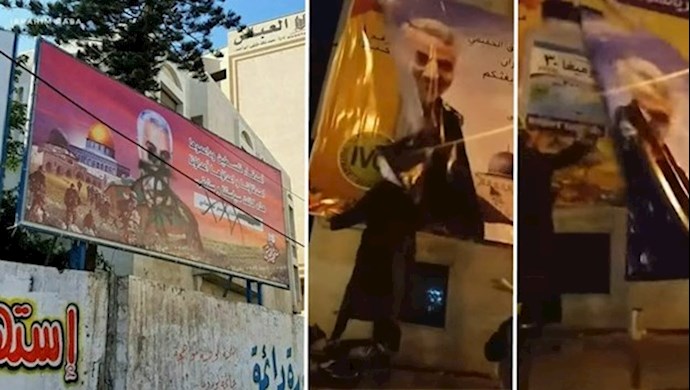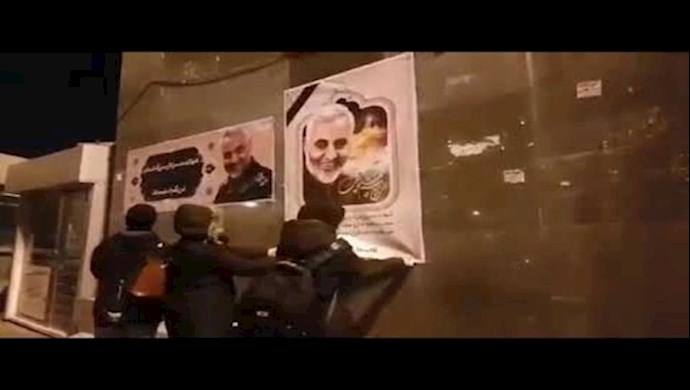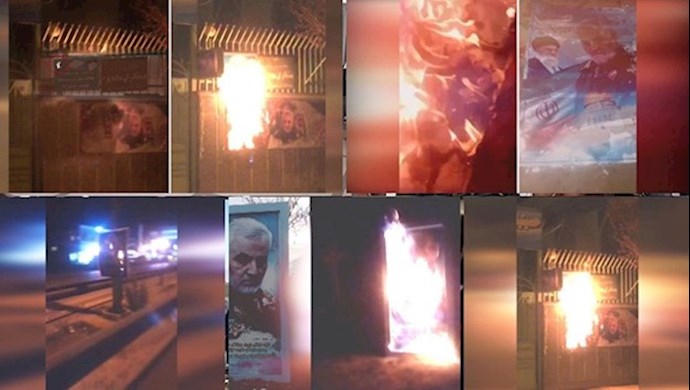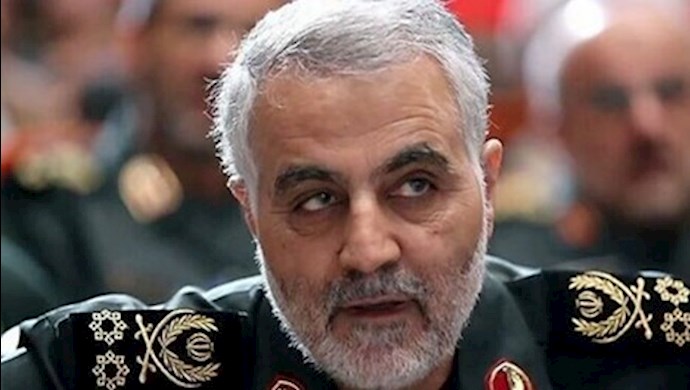Analysis by PMOI/MEK
Iran, January 3, 2021—A year after Qassem Soleimani’s death, the regime has failed to portray him as a national hero. Soleimani, the former head of the terrorist Quds Force, was responsible for the killing of thousands of people in Iran, Iraq, and Syria. He is among the most hated figures in the Middle East.
Since 1997, appointed as head of the Quds force, Soleimani became fully in charge of the regime’s terrorist attacks, recruitment and exporting fundamentalism through the Quds Force into neighboring countries, the Middle East and other countries in Asia, Africa, Europe, and the U.S.
In a program on state TV on December 31, 2020, on the anniversary of Soleimani’s death, regime officials grudgingly admitted that he is unpopular in the region.
“Suddenly, we saw people in the region distributing sweets among each other celebrating the death of commander Soleimani,” said Hossein Kamili, a cultural analyst linked to the reigme.
In recent days, video footage spread in social media showed posters and images of Soleimani torn down in Gaza and other parts of the Middle East.
The people of Gaza tear down a poster of Qassem Soleimani.
The dead top terrorist of #Iran's regime is hated by all nations across the Middle East. pic.twitter.com/2cCrOzFbDR
— People's Mojahedin Organization of Iran (PMOI/MEK) (@Mojahedineng) December 31, 2020
“The installation of images of Qassem Soleimani in Gaza by the Iranian regime agents caused anger and disgust among the Palestinians and the Syrian opposition and the people in the Arab countries,” the Orient News reported on January 1. The Orient News described Qassem Soleimani, as murderer of the hundred thousand Syrians and the director of the war against the Syrian people and children. A published video footage shows people tearing down and stamping on posters of Qassem Soleimani in Gaza.

Soleimani’s images torn down in Gaza
Also, Ziyad al-Nakhalah, the Secretary-General of Iran’s affiliated Islamic Jihad Movement in Palestine acknowledged on December 31, that Soleimani played an important role in turning Sudan into a weapons warehouse and transfer center for groups affiliated to the Iranian regime in the region. “He went personally to Sudan and signed an agreement to turn the country into a weapons transfer station to Gaza,” al-Nakhalah said.
Soleimani was also an advisor to regime supreme leader Ali Khamenei in regard to some of these countries, including Afghanistan and Iraq. He also had the last word in the regime’s Supreme National Security Council on Iran’s meddling in Afghanistan and Iraq. He personally led the efforts to escalate the regime’s political influence and terrorist activities in Lebanon, Syria, and Palestine.
Soleimani’s death has brought joy and happiness not only in Palestine, Iraq, and Syria but even more in Iran itself. During the whole of 2020, images, posters, and banners of Soleimani were torn down and set on fire throughout the country. After his death, the regime set up a massive propaganda campaign, in which it tried to portray Soleimani as a nationa hero who was popular and loved among the people. But people across the country were celebrating the elimination of one of the key players in the regime’s suppressive apparatus. Also, during various protests, including the major demonstration following the regime admitted the Ukraine International Airlines flight PS752 was targeted by its military units, images of Soleimani were torn down in various areas of Tehran and other cities. The people were chanting “Soleimani is a murderer, just like his leader.”

Soleimani’s images torn down during anti-regime protests in January 2020 in Tehran
Soleimani has a long history of suppressing protesters and opposition members. Esmail Saadatnejad, a former adviser to Soleimani, told the State TV on January 1 that in a meeting at Soleimani home in Kerman, when he was informed about anti-regime protests in the city against then supreme leader Ruhollah Khomeini he did not hesitate a minute and rushed into the scene and “handled the situation.”

The rebellious and defiant youths torch images and posters of Soleimani across Iran
Soleimani also played a key role in the killing of the members of the People’s Mojahedin Organization of Iran (PMOI/MEK) in camps Ashraf and Liberty in Iraq. The September 2013 attack, which became known as the “Camp Ashraf Massacre,” resulted in the death of 52 MEK members and the abduction of seven others. Soleimani personally oversaw the plans of the massacre. Two days after the attack, he attended the regime’s Assembly of Experts to report on his heinous crime.
Under the command of Qassem Soleimani, the criminal proxy forces of the Iranian regime in Iraq also staged numerous rocket attacks against MEK members in Camp Liberty, near the Baghdad Airport, killing dozens and wounding hundreds of others.
Soleimani's death was an irreparable blow for the regime since he was the key enforcer of regime’s blackmailing policy and export of terrorism.
In recent days, many regime officials constantly acknowledged that Soleimani guided somehow Iran’s “foreign policy”.
Hossein Amir Abdollahian, Special Aide to regime’s President Hassan Rouhani in International Affairs from 2016, told the state TV on December 30 that Soleimani had special management in negotiations and foreign policy.
“I was in several meetings between [regime’s Foreign Minister Mohammad Javad] Zarif and Soleimani and I saw how he paid an especial attention to Soleimani’s analyses and views for the future,” Abdollahian said. “The Iran-US negotiation file was in hands of Soleimani and he was responsible for transfer the Supreme leaders’ advice to the negotiation team.”
Also, previously, Zarif acknowledged the fact that measures taken by his Foreign Ministry were coordinated with Soleimani. “Soleimani and I would meet every week and coordinate our measures. Regarding regional issues whatever we did was in collaboration with each other. Those who knew Soleimani closely, those who know (Hezbollah leader) Hassan Nasrallah closely, they know how our relations were,” Zarif said during a heated discussion with members of Majlis.
Despite its enormous efforts and propaganda, the regime failed to change the truth. Soleimani went down in history as what he truly was: a vicious criminal and a symbol of 40 years of foreign terrorism and domestic repression.





